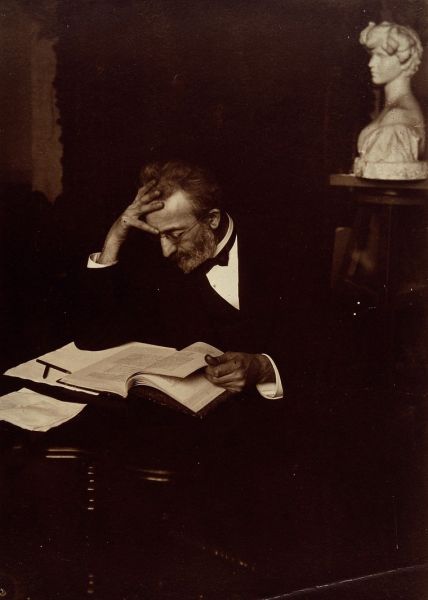File:Yves Delage.jpg

Original file (760 × 1,065 pixels, file size: 142 KB, MIME type: image/jpeg)
Yves Delage
Yves Delage (854 – 1920) was a French zoologist known for his work into invertebrate physiology and anatomy. He also discovered the function of the semicircular canals in the inner ear.
Russell ES. The interpretation of development and heredity. (1930) Oxford. Univ. Press.
"In his remarkable book on the major problems of biology 1 Delage gives a valuable historical account and critique of the main theories of development and heredity, particularly those of the nineteenth century, and indicates in broad outline a theory of his own which he calls the ‘theorie des causes actuelles’.
He opposes vigorously the Weismannian conception that all the potentialities of the germ are already present therein in material form, and he rejects completely the notion of representative particles. It is not necessary to follow in any great detail his thoroughgoing criticism of the numerous ‘micromeristic’ or particulate theories, which he contrasts to their disadvantage with the ‘organicist’ views held by W. Roux and himself; we may, however, briefly consider his treatment of Weismann and H. de Vries. To the general hypothesis that there may exist ultra-microscopic particles, intermediate between cellular units and molecules, and capable of assimilation, growth, and division, he raises no objection in principle, but he points out the futility of assigning to such particles special powers of determining the course of development. If they are assumed to represent and determine particular characters of the organism, two alternative logical possibilities arise. Either they represent the concrete characters of the organism, in which case their number must be infinite, or they represent abstract or subjective characters, in which case their own existence is equally abstract and subjective, i.e. they do not exist materially at all but are mere symbols. Weismann’s system is one of complete preformation — all his Ids must have been present in the ancestral Protozoa — and it does not allow for the influence of environment and the new-creation of form. He has got all that can be got from the concept of representative particles ; if his system is a failure it is because the fundamental hypothesis is false: ‘Let us therefore draw the conclusion: there do not exist in the germ-plasm distinct particles representing the parts of the body or the characters and properties of the organism’ (p. 719)."
1 La Structure du Protoplasma et les Theories sur V Her editi et les grands ProbUmes de la Biologie generale. Paris, 1895, 2nd edit., 1903; quotations are from the first edition.
Reference
Credit Yves Delage. Photograph. Credit: Wellcome Collection. CC BY
License information - S3_V0028000_V0028127.jpg
https://iiif.wellcomecollection.org/image/V0028127.jpg/full/760%2C/0/default.jpg
Copyright
You can use this work for any purpose, including commercial uses, without restriction under copyright law. You should also provide attribution to the original work, source and licence.
Creative Commons Attribution (CC BY 4.0) terms and conditions https://creativecommons.org/licenses/by/4.0
Cite this page: Hill, M.A. (2024, April 19) Embryology Yves Delage.jpg. Retrieved from https://embryology.med.unsw.edu.au/embryology/index.php/File:Yves_Delage.jpg
- © Dr Mark Hill 2024, UNSW Embryology ISBN: 978 0 7334 2609 4 - UNSW CRICOS Provider Code No. 00098G
File history
Click on a date/time to view the file as it appeared at that time.
| Date/Time | Thumbnail | Dimensions | User | Comment | |
|---|---|---|---|---|---|
| current | 14:31, 3 December 2019 |  | 760 × 1,065 (142 KB) | Z8600021 (talk | contribs) | S3_V0028000_V0028127.jpg |
You cannot overwrite this file.
File usage
The following 2 pages use this file: